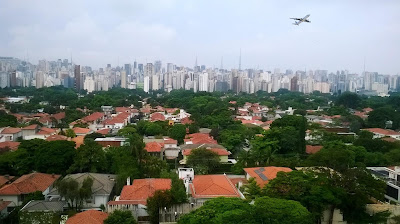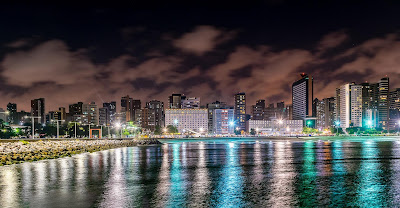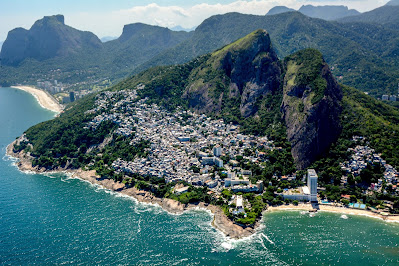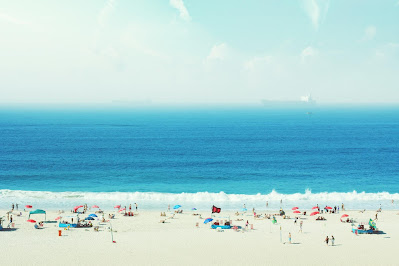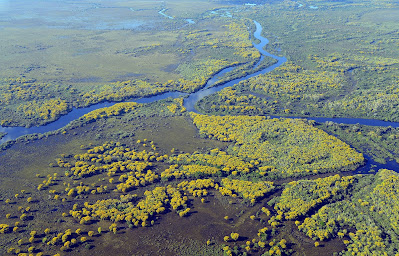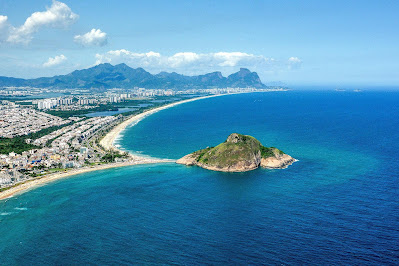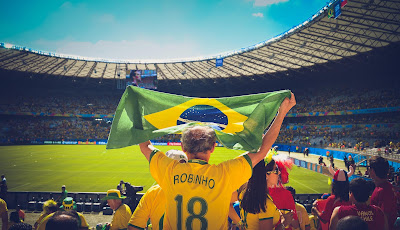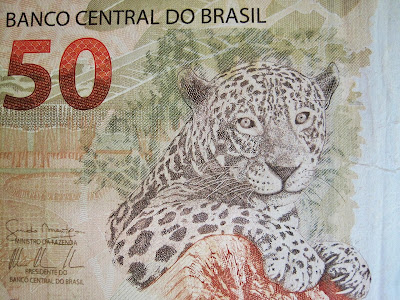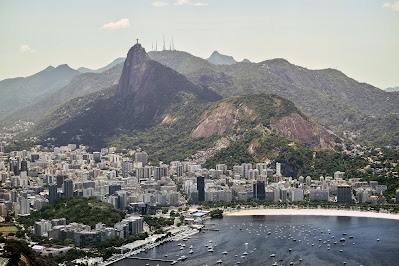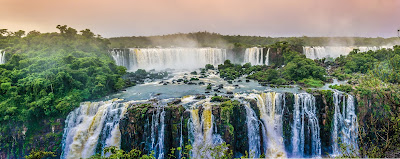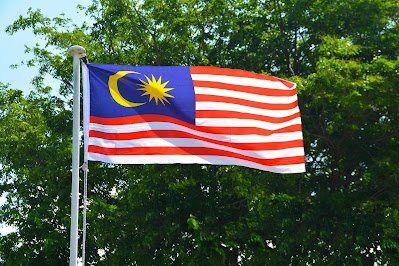All About Brazil, Brazil Tourism, Amazing Brazil
Geography
Area: 8,511,965 sq. km. (3,290,000 sq. mi.); slightly smaller than the U.S.
Cities: Capital--Brasilia (pop. 2.5 million). Other cities--Sao Paulo (10.9 million), Rio de Janeiro (6.1 million), Belo Horizonte (2.4 million), Salvador (2.9 million), Fortaleza (2.4 million), Curitiba (1.8 million), Recife (1.5 million), Porto Alegre (1.4 million).
Terrain: Dense forests in northern regions including Amazon Basin; semiarid along northeast coast; mountains, hills, and rolling plains in the southwest, including Mato Grosso; midwestern savannahs; the world's largest wetland area; and coastal lowland.
Climate: Mostly tropical or semitropical with temperate zone in the south.
People
Nationality: Brazilian.
Population (2010 est.): 201 million.
Annual growth rate: 1.17%.
Ethnic groups: African, Portuguese, Italian, German, Spanish, Japanese, Indigenous peoples, and people of Middle Eastern descent.
Religion: Roman Catholic (74%).
Language: Portuguese.
Education: Literacy--88% of adult population.
Health: Infant mortality rate--21.86/1,000. Life expectancy--72.6 years in 2010.
Work force (2009 est.): 101.7 million.
Government
Type: Federative republic.
Independence: September 7, 1822.
Constitution: Promulgated October 5, 1988.
Branches: Executive--president (chief of state and head of government popularly elected to no more than two 4-year terms). Legislative--Senate (81 members popularly elected to staggered 8-year terms), Chamber of Deputies (513 members popularly elected to 4-year terms). Judicial--Supreme Federal Tribunal (11 lifetime positions appointed by the president).
Political parties: Workers' Party (PT), Brazilian Democratic Movement Party (PMDB), Brazilian Social Democratic Party (PSDB), Democrats (DEM), Democratic Workers Party (PDT), Brazilian Labor Party (PTB), Party of the Republic (PR), Brazilian Socialist Party (PSB), Communist Party of Brazil (PC do B), Progressive Party (PP). Popular Socialist Party (PPS), Green Party (PV), Socialism and Freedom Party (PSOL), the National Mobilization Party (PMN), Humanistic Solidarity Party (PHS), the Brazilian Republican Party (PRB), Christian Social Party (PSC), Christian Labor Party (PTC), and the Labor Party of Brazil (PT do B), Brazilian Communist Party (PCB), and Brazilian Labor Renewal Party (PRTB).
Economy
GDP (official exchange rate): $ 1.577 trillion.
GDP (purchasing power parity): $2.025 trillion.
Annual real growth (2010 est.): 7.1%.
Per capita GDP (official exchange rate): $8,240.
Per capita GDP (purchasing power parity): $10,600.
Natural resources: Iron ore, manganese, bauxite, nickel, uranium, gemstones, oil, wood, and aluminum. Brazil has 14% of the world's renewable fresh water.
Agriculture (5.6% of GDP): Products--coffee, soybeans, sugarcane, cocoa, rice, livestock, corn, oranges, cotton, wheat, and tobacco.
Industry (27.8% of GDP): Types--steel, commercial aircraft, chemicals, petrochemicals, footwear, machinery, motors, vehicles, auto parts, consumer durables, cement, and lumber.
Services (66.6% of GDP): Types--mail, telecommunications, banking, energy, commerce, and computing.
Trade: Trade balance (2009)--$ 25.3 billion surplus. Exports--$153.0 billion. Major markets—China 13.20%, United States 10.20%, Argentina 8.36%. Imports--$127.7 billion. Major suppliers--United States 15.69%, China 12.46%, and Argentina 8.84%.
PEOPLE AND HISTORY
With its estimated 201 million inhabitants, Brazil has the largest population in Latin America and ranks fifth in the world. The majority of people live in the south-central area, which includes the industrial cities of Sao Paulo, Rio de Janeiro, and Belo Horizonte. Brazil underwent rapid urban growth; by 2005, 81% of the total population was living in urban areas. This growth aids economic development but also creates serious social, security, environmental, and political problems for major cities.
Six major groups make up the Brazilian population: the Portuguese, who colonized Brazil in the 16th century; Africans brought to Brazil as slaves; various other European, Middle Eastern, and Japanese and other Asian immigrant groups who settled in Brazil since the mid-19th century; and indigenous peoples of Tupi and Guarani language stock. Intermarriage between the Portuguese and indigenous people or slaves was common. Although the major European ethnic stock of Brazil was originally Portuguese, subsequent waves of immigration contributed to a diverse ethnic and cultural heritage.
From 1875 until 1960, about 5 million Europeans immigrated to Brazil, settling mainly in the four southern states of Sao Paulo, Parana, Santa Catarina, and Rio Grande do Sul. Immigrants came mainly from Italy, Germany, Spain, Japan, Poland, and the Middle East. The largest Japanese community outside Japan is in Sao Paulo. Despite class distinctions, national identity is strong. Brazil prides itself on being open to all races but recently began a national conversation on racial equality and entered into a Memorandum of Understanding with the United States on addressing racial inequality. Indigenous full-blooded Indians, located mainly in the northern and western border regions and in the upper Amazon Basin, make up less than 1% of the population. Their numbers are declining as contact with the outside world and commercial expansion into the interior increase. Brazilian Government programs to establish indigenous reservations and to provide other forms of assistance have existed for years but are controversial.
Brazil is the only Portuguese-speaking nation in the Americas. About three-quarters of all Brazilians belong to the Roman Catholic Church; most others are members of traditional Protestant denominations, members of growing evangelical movements, or follow practices derived from African religions.
Pedro Alvares Cabral claimed Brazil for Portugal in 1500. The colony was ruled from Lisbon until 1808, when Dom Joao VI and the rest of the Portuguese royal family fled from Napoleon's army, and established its seat of government in Rio de Janeiro. Dom Joao VI returned to Portugal in 1821. His son declared Brazil's independence on September 7, 1822, and became emperor with the title of Dom Pedro I. His son, Dom Pedro II, ruled from 1831 to 1889, when a federal republic was established in a coup led by Deodoro da Fonseca, Marshal of the Army. Slavery had been abolished a year earlier by the Princess Regent Isabel while Dom Pedro II was in Europe.
From 1889 to 1930, the government was a constitutional republic, with the presidency alternating between the dominant states of Sao Paulo and Minas Gerais. This period ended with a military coup that placed Getulio Vargas, a civilian, in the presidency; Vargas remained as dictator until 1945. Between 1945 and 1961, Brazil had six presidents: Jose Linhares, Gaspar Dutra, Vargas himself, Cafe Filho, Carlos Luz, Nereu Ramos, Juscelino Kubitschek, and Janio Quadros. When Quadros resigned in 1961, Vice President Joao Goulart succeeded him.
Goulart's years in office were marked by high inflation, economic stagnation, and the increasing influence of radical political elements. The armed forces, alarmed by these developments, staged a coup on March 31, 1964. The coup leaders chose Humberto Castello Branco as president, followed by Arthur da Costa e Silva (1967-69), Emilio Garrastazu Medici (1969-74), and Ernesto Geisel (1974-79), all of whom were senior army officers. Geisel began a democratic opening that was continued by his successor, Gen. Joao Baptista de Oliveira Figueiredo (1979-85). Figueiredo not only permitted the return of politicians exiled or banned from political activity during the 1960s and 1970s, but also allowed them to run for state and federal offices in 1982.
Concurrently, an electoral college consisting of all members of congress and six delegates chosen from each state continued to choose the president. In January 1985, the electoral college voted Tancredo Neves from the opposition Brazilian Democratic Movement Party (PMDB) into office as President. Neves died 39 days laterbefore his presidential inauguration, from abdominal complications. His Vice President, former Senator Jose Sarney, became President upon Neves' death. Brazil completed its transition to a popularly elected government in 1989, when Fernando Collor de Mello won 53% of the vote in the first direct presidential election in 29 years. In 1992, a major corruption scandal led to his impeachment and ultimately, resignation. Vice President Itamar Franco took his place and governed for the remainder of Collor's term.
To date all democratically elected presidents that followed Itamar Franco started and finished their mandate with no interruptions in the constitutional order. On October 3, 1994 Fernando Henrique Cardoso was elected President with 54% of the vote. Cardoso took office January 1, 1995, and pursued a program of ambitious economic reform. He was re-elected in .1998 for a second four-year term. Luiz Inacio Lula da Silva, commonly known as Lula, was elected president in 2002, after his fourth campaign for the office. He was re-elected in 2006 for a second four-year term. President Lula, a former union leader, is Brazil's first working-class president. Since taking office he has taken a prudent fiscal path, warning that social reforms would take years and that Brazil had no alternative but to maintain tight fiscal austerity policies. At the same time he made fighting poverty through conditional transfer payments an important element of his policies.
The next general election will be held in 2010 to elect a new president and state governors, federal and state deputies, and a portion of senators. The first round of elections is scheduled for October 3, 2010 with run-offs, if necessary, on October 31, 2010.
GOVERNMENT AND POLITICAL CONDITIONS
Brazil is a federal republic with 26 states and a federal district. The 1988 constitution grants broad powers to the federal government, made up of executive, legislative, and judicial branches. The president holds office for four years, with the right to re-election for an additional four-year term, and appoints his own cabinet. There are 81 senators, three for each state and the Federal District, and 513 deputies. Senate terms are eight years, staggered so that two-thirds of the upper house is up for election at one time and one-third four years later. Chamber terms are four years, with elections based on a complex system of proportional representation by states. Each state is eligible for a minimum of eight seats; the largest state delegation (Sao Paulo's) is capped at 70 seats. This system is weighted in favor of geographically large but sparsely populated states.
Nineteen political parties are represented in Congress. Since representatives to the lower house might switch parties, the proportion of congressional seats held by particular parties can change. The major political parties are:
Workers' Party (PT-center-left)
Democrats (DEM-center-right)
Brazilian Democratic Movement Party (PMDB-center)
Brazilian Social Democratic Party (PSDB-center-left)
Green Party (PV-left)
Socialism and Freedom Party (Psol-left)
Brazilian Labor Party (PTB-center-right)
Brazilian Socialist Party (PSB-left)
Democratic Labor Party (PDT-left)
Communist Party of Brazil (PCdoB-left)
President Lula was re-elected on October 29, 2006 in a second round victory with over 60% of the vote, over Geraldo Alckmin of the PSDB. Lula's PT party failed to win a majority in either the lower or upper houses in concurrent legislative elections and was obliged to form a coalition with the centrist PMDB party--which won the most seats in the lower house and ended up with the largest number in the Senate--and a collection of minor parties. The PT won five of twenty-seven governorships, but the opposition PSDB remains in control of the critical states of Sao Paulo and Minas Gerais. The PMDB, as in the legislative elections, won the most governorships of any one party, controlling seven states. Because of the mandatory revenue allocation to states and municipalities provided for in the 1988 constitution, Brazilian governors and mayors have exercised considerable power since 1989.
Lula's electoral victory came despite a series of corruption scandals that resulted in the resignation of senior PT officials and the electoral defeat of several congressmen from parties allied to the PT. A number of congressional investigations are ongoing, though Lula has never been linked to any of the scandals.
ECONOMY
President Lula and his economic team implemented prudent fiscal and monetary policies which have been credited with helping shield Brazil from the worst of the global financial crisis of 2008 and 2009. That said, Brazil's economy did not escape the crisis unscathed. After posting growth rates of 5.7% in 2007 and 5.1% in 2008, Brazil’s GDP dropped 0.2% in 2009. Several steps were taken by the government to minimize the impact of the crisis, including injecting more than U.S. $100 billion of additional liquidity into the economy, providing tax cuts to manufacturers and consumers, and reducing Central Bank interest rates. Brazil emerged from the global financial crisis in 2009 and economic growth is estimated to reach 7.1% in 2010. A more sustainable growth level, in the range of 4.5%, is predicted for 2011. Brazil is now a net creditor nation, and the 2008-2009 financial crisis notwithstanding, has in recent years experienced sustained growth, strong exports, healthy external accounts, moderate inflation, decreasing unemployment, and reductions in the debt-to-GDP ratio. Brazil holds investment grade status from the major rating agencies.
Significant challenges still remain in the Brazilian economy. The total tax burden is high, income distribution remains skewed, and the private business community complains of burdensome regulation. Annual interest rates for consumers (on credit cards, for example) can be as high as 150%. Brazil is generally open to and encourages foreign investment. It is the largest recipient of foreign direct investment (FDI) in Latin America, and the United States is traditionally the number one foreign investor in Brazil. Since domestic saving is not sufficient to sustain long-term high growth rates, Brazil must continue to attract FDI. Many business groups and international organizations have highlighted the need for Brazil to improve its regulatory environment for investments and to simplify the tax code in order to attract increasing levels of FDI.
Brazil does not have a bilateral tax or investment treaty with the United States. In an effort to attract private investment to infrastructure, legislation promoting public-private partnerships , was passed in 2004. In 2007, the Government of Brazil initiated an ambitious infrastructure development program, known as the Growth Acceleration Program (PAC), to address the country’s significant road, rail, energy supply, and other infrastructure needs. The program is viewed by the government as a central component of its development strategy, which it believes also serves as a countercyclical factor in cushioning Brazil’s economy from the full effects of the world financial crisis. Some observers said that the PAC is cumbersome and weighted down with too many initiatives and bureaucracy, limiting its effectiveness.
Trade Policy
President Lula has made economic growth and poverty alleviation top priorities. Export promotion is a main component in plans to generate growth and reduce what is seen as a vulnerability to international financial market fluctuations. To increase exports, the government is seeking access to foreign markets through trade negotiations and increased export promotion as well as government financing for exports.
Brazil has been a leading player in the World Trade Organization’s Doha Round negotiations and continues to seek to bring that effort to successful conclusion. To further increase its international profile (both economically and politically), the Lula administration is also seeking expanded trade ties with developing countries, as well as a strengthening of the Mercosul (Mercosur in Spanish) customs union with Uruguay, Paraguay, and Argentina. In 2004, Mercosul concluded free trade agreements with Colombia, Ecuador, Venezuela, and Peru, adding to its existing agreements with Chile and Bolivia to establish a commercial base for the newly-launched South American Community of Nations.
In 2008 Mercosul concluded a free trade arrangement with Israel, and another arrangement with Egypt was signed in 2010. Mercosul is pursuing free trade negotiations with Mexico and Canada and resumed trade negotiations with the EU. The trade bloc also plans to launch trilateral free trade negotiations with India and South Africa, building on partial trade liberalization agreements concluded with these countries in 2004. In July 2006, Venezuela officially joined the Mercosul trade bloc; its full membership is pending ratification by the Paraguayan congress. China has increased its importance as an export market for Brazilian soy, iron ore, and steel, becoming one of Brazil's principal trading partners and a potential source of investment.
Agriculture
Agriculture is a major sector of the Brazilian economy, and is key for economic growth and foreign exchange. Agriculture accounts for about 5.5% of GDP (25% when including agribusiness) and 36% of Brazilian exports. Brazil enjoyed a positive agricultural trade balance of $55 billion in 2009. Brazil is the world's largest producer of sugarcane, coffee, tropical fruits, frozen concentrated orange juice (FCOJ), and has the world's largest commercial cattle herd (50% larger than that of the U.S.) at 170 million head. Brazil is also an important producer of soybeans (second to the United States), corn, cotton, cocoa, tobacco, and forest products. The remainder of agricultural output is in the livestock sector, mainly the production of beef and poultry (second to the United States), pork, milk, and seafood.
Environment, Science, and Technology
About half of Brazil is covered in forests, and Brazil has the majority of the world's largest rain forest, the Amazon. Little less than forty percent of the Amazon, and to a lesser extent the Cerrado (tropical savannah), is managed by national, state, or municipal governments, either as conservation units, forest concessions, or officially designated indigenous lands. In the last 30 years, migration into the Amazon and the conversion of forest land, primarily for agricultural use, reduced forest cover in the Brazilian Amazon by twenty percent. Through initiatives such as the revitalization of degraded pastures and forest, agriculture, and livestock integration, the government made progress in reducing deforestation for agricultural use. However, deforestation due to illegal logging remains a serious problem. In 2006, the government created the Brazilian Forest Service with the aim to manage in a sustainable manner the Amazon forest resources.
Currently, deforestation produces the vast majority of Brazil’s greenhouse gas emissions and about twenty percent of the world’s emissions. Consistent with the ambitious position it announced at COP-15 in Copenhagen, in February 2010, Brazil announced it would undertake a set of Nationally Appropriate Mitigation Actions (NAMAs) to assist with its goal of reducing greenhouse gas emissions by 36.1 to 38.9 percent by 2020. These NAMAs, in theory, would equate to about a twenty-five percent reduction in emissions by 2020 compared with 2005. There has not yet been significant action on implementing the NAMAs, although the second edition of the National Climate Change Plan, scheduled to be released by the end of 2010, should detail the domestic actions Brazil would take to implement these NAMAs.
Brazil is a leader in science and technology in South America and a global leader in some fields, such as biofuels, agricultural research, deep-sea oil production, and remote sensing. The Brazilian Government seeks to develop an environment that is more supportive of innovation, taking scientific advances from the laboratory to the marketplace in order to promote economic growth. Yet there are still some challenges. With the vast majority of the population living in urban areas, Brazil faces serious environmental obstacles in providing potable water to its citizens and removing and treating their waste water.
U.S. Government, private sector, and academic researchers have extensive ties with Brazilian counterparts. Areas in which there is close cooperation include biofuels, medical research, remote sensing, and agriculture. The extent of bilateral scientific and technological cooperation is expanding and prospective areas in which to expand include advanced materials, telecommunications, energy transmission, and energy efficiency. Limitations to cooperation include substantial restrictions on foreign researchers collecting or studying biological materials, due to concerns over possible unauthorized taking and commercialization of genetic resources or traditional knowledge of indigenous communities (often referred to as "biopiracy").
Other Aspects
Brazil has one of the most advanced industrial sectors in Latin America. Accounting for roughly one-third of the GDP, Brazil's diverse industries include automobiles and parts, machinery and equipment, textiles, shoes, cement, computers, aircraft, and consumer durables. Brazil continues to be a major world supplier of commodities and natural resources, with significant operations in lumber, iron ore, tin, other minerals, and petrochemicals. Brazil has a diverse and sophisticated services industry as well, including developed telecommunications, banking, energy, commerce, and computing sectors. The financial sector is secure and provides local firms with a wide range of financial products, yet interest rates remain among the highest in the world. The largest financial firms are Brazilian (and the two largest banks are government-owned), but U.S. and other foreign firms have an important share of the market.
Government-initiated privatization after 1996 triggered a flood of investors in the telecom, energy, and transportation sectors. Privatization in the transportation sector has been particularly active over the last 20 years. Many antiquated and burdensome state management structures that operated in the sector were dismantled, though some still exist. The Brazilian railroad industry was privatized through concession contracts ranging from 30 to 60 years, and the ports sector is experiencing similar, albeit less expansive, privatization. In response to the dramatic deterioration in the national highway system, the federal government granted concessions for existing highways to private companies, which in turn promise to restore, maintain, and expand these highways in exchange for toll revenues generated. New opportunities are expected to arise with the opening of the Brazilian civil airports to private management and investment through a federal concession model, but the initiative faces obstacles due to questions surrounding sovereignty and opposition from airport unions. The United States and Brazil signed an Air Services Liberalization Agreement in 2008 that significantly expanded commercial air travel between the two countries.
The Government of Brazil undertook an ambitious program to reduce dependence on imported oil. In the mid-1980s, imports accounted for more than 70% of Brazil's oil and derivatives needs; the net figure is now zero. Brazil announced in early 2008 the discovery of the Tupi and Carioca oil fields off the coast of Rio de Janeiro. The oil reserves in these fields are conservatively estimated at between 30 billion and 80 billion barrels, which would put Brazil in the top ten countries in the world in reserves. Output from the existing Campos Basin and the discovery of the new fields could make Brazil a significant oil exporter by 2015. Brazil is one of the world's leading producers of hydroelectric power. Of its total installed electricity-generation capacity of 112,000 megawatts, hydropower accounts for 77,000 megawatts (69%). Brazil is also the world’s largest biofuels exporter and sugar-based ethanol makes up over 50% of its vehicle fuel usage. Brazil and the United States, as the world’s largest biofuels producers, are working jointly through a 2007 memorandum of understanding to help make sustainable biofuels a global commodity.
Like its supply of carbon based fossil fuels, Brazil’s proven mineral resources are extensive. Large iron and manganese reserves are important sources of industrial raw materials and export earnings. Mining companies, most of them Brazilian, tend to prefer to explore the deposits of nickel, tin, chromite, bauxite, beryllium, copper, lead, tungsten, zinc, gold, and other minerals. High-quality, coking-grade coal required in the steel industry is in short supply.
FOREIGN RELATIONS
Brazil has traditionally been a leader in the inter-American community and played an important role in collective security efforts, as well as in economic cooperation in the Western Hemisphere. Brazil supported the Allies in both World Wars. During World War II, its expeditionary force in Italy played a key role in the Allied victory at Monte Castello. It is a member of the Organization of American States (OAS) and a party to the Inter-American Treaty of Reciprocal Assistance (Rio Treaty). Recently, Brazil has given high priority to expanding relations with its South American neighbors and is a founding member of the Latin American Integration Association (ALADI), the Union of South American Nations (UNASUL) created in June 2004, and Mercosul, a customs union between Argentina, Uruguay, Paraguay, and Brazil, with Chile, Bolivia, Peru, Colombia, and Ecuador as associate members; Venezuela's full membership is pending.
Brazil is a charter member of the United Nations and participates in its specialized agencies. It has contributed troops to UN peacekeeping efforts in the Middle East, the Democratic Republic of the Congo, Cyprus, Mozambique, Angola, East Timor, and most recently Haiti. Brazil is currently leading the UN peacekeeping force in Haiti. In 2010-2011, Brazil is serving as a non-permanent member of the UN Security Council. Prior to this, it had been a member of the UN Security Council nine times. Brazil is seeking a permanent position on the Council.
As Brazil's domestic economy has grown and diversified, the country has become increasingly involved in international economic and trade policy discussions. For example, Brazil was a leader of the G-20 group of nations and in 2009 became a creditor country to the International Monetary Fund (IMF). The U.S., Western Europe, and Japan are primary markets for Brazilian exports and sources of foreign lending and investment. China is a growing market for Brazilian exports. Brazil also bolstered its commitment to nonproliferation through ratification of the nuclear Non-Proliferation Treaty (NPT), signing a full-scale nuclear safeguards agreement with the International Atomic Energy Agency (IAEA), acceding to the Treaty of Tlatelolco, and joining the Missile Technology Control Regime (MTCR) and the Nuclear Suppliers Group.
U.S.-BRAZILIAN RELATIONS
The United States was the first country to recognize Brazil's independence in 1822. The two countries have traditionally enjoyed friendly, active relations encompassing a broad political and economic agenda. Deepening U.S.-Brazil engagement and cooperation are reflected in high-level contacts between the two governments, including reciprocal visits by President George W. Bush and President Lula in March 2007 and visit by Secretary of State Hillary Clinton in March 2010, as well as four other cabinet-level visits in the first part of 2010.
Ongoing topics of discussion and cooperation include trade and finance; biofuels; regional security; nonproliferation and arms control; human rights and trafficking in persons; international crime, including financial support to terrorist groups; counter-narcotics; social inclusion; and environmental and climate change issues. In March 2010, during Secretary of State Hillary Clinton’s visit to Brazil, Brazil and the U.S. signed three memoranda of understanding—on Climate Change Cooperation, on the Advancement of Women, and on Trilateral Cooperation. Three other agreements were signed with Brazil in 2010: the Defense Cooperation Agreement in April, the Binational Energy Working Group Joint Action Plan in July and the Tropical Forests Conservation Act in August. The Brazil and the U.S. also meet periodically for structured consultations and to increase cooperation on Agriculture, Trade, Science and Technology and Nuclear Energy.
In addition to these recently signed initiatives and periodic meetings, the governments of Brazil and of the United States have a long-standing collaboration on biofuels, trilateral cooperation and eliminating racial discrimination. Under a Memorandum of Understanding signed in 2007, Brazil and the U.S. have been working together to advance biofuels cooperation, bilaterally and globally. There is also cooperation on trilateral development programs in Mozambique in the health sector and food security, with plans to extend this cooperation to additional countries in Africa, Haiti and El Salvador. In March 2008, Secretary of State Condoleezza Rice visited Brazil and signed a historic Joint Action Plan to Eliminate Racial and Ethnic Discrimination and Promote Equality. The plan calls for Brazil and the United States to work jointly in combating racial discrimination and sharing best practices in tackling discrimination in the areas of education, law enforcement, labor, health, and many other areas.
Discover the Indiana Jones in you by exploring Brazil's wild and exotic regions. From the deep jungle of the Amazon to the wildlife rich savannahs of the Pantanal; from the wind-swept dunes of the tropical northeast to the mountains and canyons of Brazil's Sertao, Brazil Nuts offers the widest variety of time-tested adventure an ecological trips that really deliver.
Copacabana is often called the most famous beach. It stretches more than 3 miles (4.5 kilometers) to a residential area of Rio de Janeiro, Brazil. Landscape impressive as the granite rocks around the entrance to the bay. The city offers great opportunities to meet, in shopping malls, cinemas, fashion and jewelry shops, as well as regulating the Horde restaurants and nightclubs. The summer season lasts from December to February in the atmosphere about 77 F (25 C) to 95 F (35 C). Beach also offers a parade of speech is so beautiful bodies and beautiful face and the game of tennis and paddle.
The International Olympic Committee (IOC) picked Rio de Janeiro, Brazil as the host city for the 2016 Olympic games. Chicago was out in the first round of voting, then Tokyo, then Madrid. Brazil is the first South American city to host the Olympic games. President Barack Obama, the first lady, Oprah and others made a trip to Denmark to voice their desires to bring the 2016 Olympic Games to Chicago, and are returning from that trip now. CNN reported from downtown Chicago this morning when Chicago was eliminated from the Olympic bid. The crowd unanimously looked perplexed, as though they didn’t hear the correct announcement. White House officials called the result “disappointing” but said the president will move on to other issues. Rio de Janeiro on the other hand is absolutely thrilled. CNN showed a crowded beach and downtown area filled with people when the decision was handed down that they won the bid, people were screaming with excitement at the thought of the 2016 Olympic Summer games being played in their city.
Ecuador and Chile are the only countries in South America that Brazil does not have common borders with, having 10 neighbors: French Guiana, Suriname, Guyana, Venezuela, Colombia, Bolivia, Peru, Uruguay, Paraguay and Argentina. Brazil has reached approximately 164 million inhabitants at the end of 1999, ranking fifth in the world, after China, India, USA and Indonesia. Population density is 19.2 inhabitants per km2 and life expectancy increased from 41.5 years in 1950 to 67.7 years in 1999. Urban population is about 79.63. Rural population was still overwhelmed by the urban from the 60s. From the administrative point of view, Brazil is a federal state comprising 26 states and Federal District, where there is the capital, Brasilia.
The 5th world power as surface, and 8th economic power in the world, Brazil is not a country of the future, but it is a country of the present, a great window of opportunities open to those wishing to work with one of the protagonists of globalization, not only for those who love the Latin culture and civilization of an area, but for those with business sense.
With its 8.512 million km², Brazil is the largest country in Latin America, covering 47.3% of the surface of this continent, and the fifth largest country in the world in terms of area, surpassed only by Russian Federation, Canada, China and USaA. The maximum size from north to south is 4395 km and from east to west 4319 km. The Atlantic coast of Brazil has a length of 7367 km. The country is crossed by the equator near Macapa and by the Tropic of Capricorn near São Paulo. In an unusual plan to combat climate change, the Brazilian government will require coal and oil companies to plant thousands of trees in order to offset their carbon emissions. If the companies don't comply? They lose their operating licenses. According to the Environmental News Service, Brazil's power plants are responsible for emitting around 14 million tons of CO2 a year. So in an attempt to mitigate those beastly emissions, the Brazilian Environmental Service has come up with a plan that would require fossil fuel burning companies to plant a specific amount of trees a year. If companies don't plant the required number of trees, they'll be unable to legally renew their licenses or apply for new ones.
The plan would both help capture carbon and aid in Brazil's reforestation efforts, the government says. So how will the nuts and bolts of the measure, which is part of Brazil's National Climate Change Plan, actually work? The ministry's preliminary estimates show that a power plant with capacity to generate 100 MW/h, that operates during 25 percent of the year, will have to plant up to 600 trees And at that rate, the Brazilian government has predicted that by 2017 the country's power sector will have planted some 3 million trees. While it's an interesting plan, and more tress planted is always good news, such carbon offset schemes are in no way an ideal long term solution--and combined with the fact that Brazil is planning on opening 82 new coal burning plants over the next 8 years, the initiative seems more like a gesture than a solid way to curb emissions.
Brazil is an immense tropical birding paradise, boasting around 1750 bird species including a staggering close on 200 endemics to date and with several new species still being annually described. Few countries can compare to Brazil, holding the World’s greatest bio diversity, highest number of endemic birds in South America and ranks as the third richest bird country on the planet offering birders some of the most exciting bird watching and wildlife experiences in the World.
Atlantic Rainforest (South-eastern and southern Brazil) - The Lush Atlantic rainforest home to the largest number of endemics in the World, is found along the Brazilian coast and covers a series of coastal mountain ranges extending inland. This extremely rich birding area is the most commonly visited by birders due to its abundant endemics and its close proximity to Rio de Janeiro and Sao Paulo the major gate way of entry into Brazil. Pantanal Wetlands and Chapada - World famous for its abundance of nature the immense Pantanal holds the World’s largest wetlands that offer almost a superb safari type birding and nature watching experience. The open setting makes birding easy with some spectacular concentrations and species diversity where 150 bird species a day being regular (Hyacinth and Golden-collard Macaw, Jabiru, Great Rufous Woodcreeper, Helmeted Manakin).





